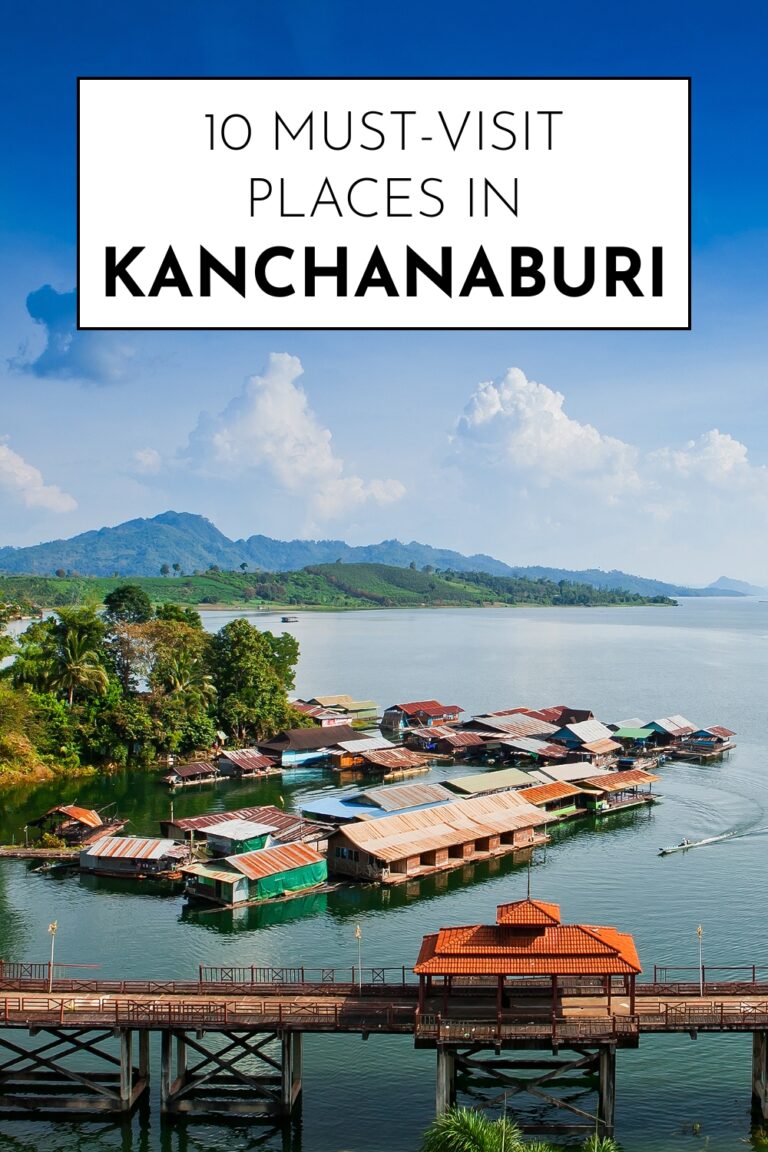Kanchanaburi, located just 130 kilometers west of Bangkok, is one of Thailand’s most historically significant and naturally beautiful provinces. This enchanting destination offers visitors a perfect blend of World War II history, stunning natural landscapes, and authentic Thai culture.
Famous worldwide for the Bridge over the River Kwai and the Death Railway, Kanchanaburi carries deep historical importance while showcasing some of Thailand’s most spectacular scenery. From cascading waterfalls and emerald pools to war museums and floating restaurants, this province delivers unforgettable experiences.
The region’s tragic wartime history has been transformed into powerful museums and memorials that honor those who suffered during the construction of the Burma Railway. Meanwhile, its pristine national parks, limestone caves, and pristine rivers offer adventure and relaxation in equal measure.
Whether you’re interested in history, nature, or cultural experiences, Kanchanaburi provides a meaningful escape from Thailand’s bustling cities. Let’s explore the ten essential destinations that make this province a must-visit location for travelers seeking both education and natural beauty.
1. Bridge over the River Kwai – Historic Icon
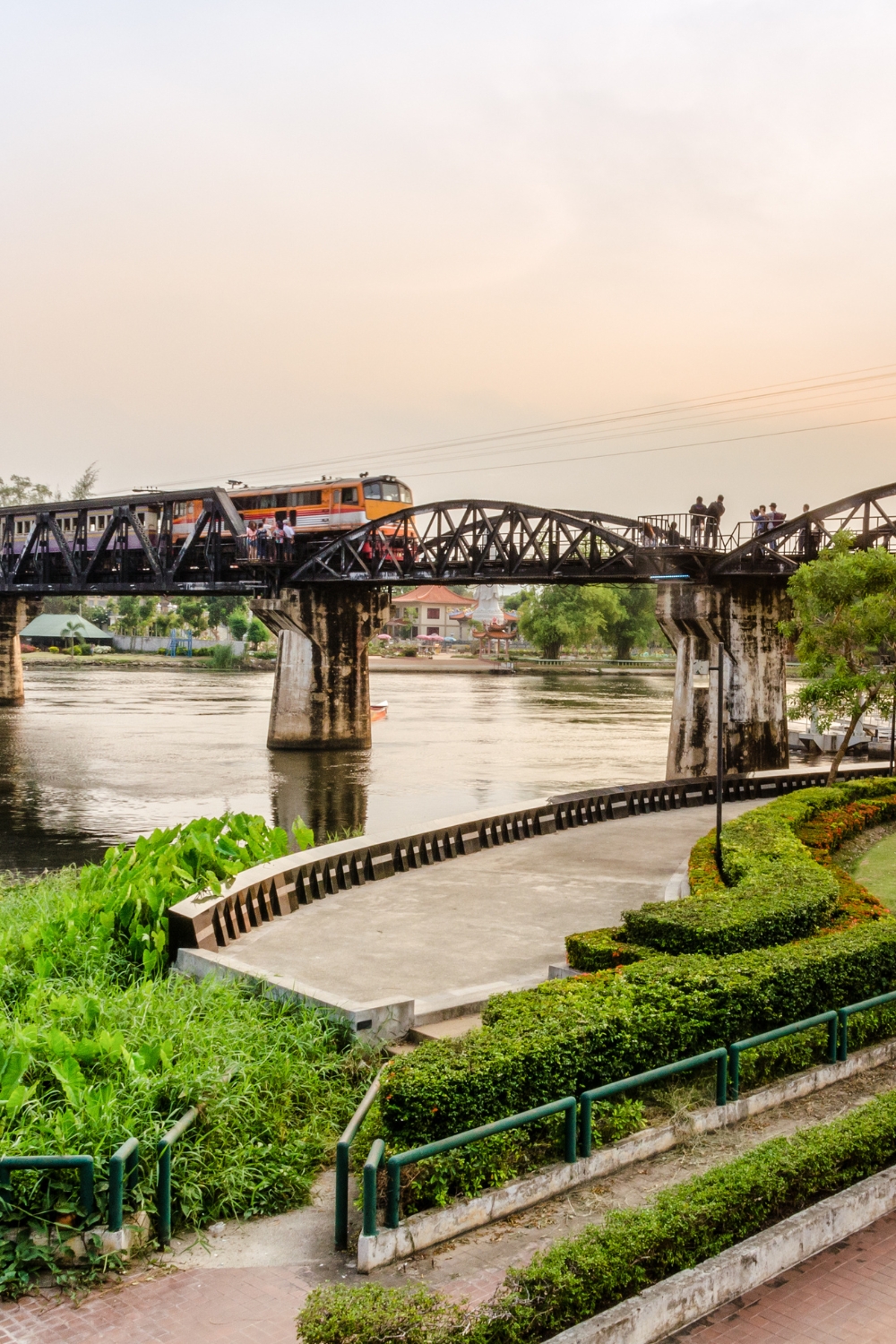
The Bridge over the River Kwai stands as Kanchanaburi’s most famous landmark and a powerful symbol of World War II history in Southeast Asia. This iron railway bridge spans the Mae Klong River and represents one of the most tragic yet remarkable engineering achievements of the war.
Historical Significance and Wartime Legacy
Built between 1942-1943 by Allied prisoners of war and Asian laborers under brutal Japanese occupation, the bridge was part of the Death Railway connecting Thailand to Burma. An estimated 100,000 workers died during its construction due to harsh conditions, disease, and malnutrition.
The current bridge is actually a reconstruction, as Allied bombing destroyed the original structure in 1945. Two curved sections of the bridge are original pieces, preserved as historical artifacts. Walking across the 300-meter span provides a sobering reminder of the human cost of war.
The bridge gained international fame through Pierre Boulle’s novel “The Bridge over the River Kwai” and the Academy Award-winning film adaptation. However, the real story is far more tragic than Hollywood’s dramatic interpretation.
Best time to visit: Early morning or late afternoon for better lighting and fewer crowds Special events: Annual River Kwai Bridge Festival in November-December Getting there: 5-minute walk from Kanchanaburi town center
2. Death Railway Museum and Research Centre – Education and Remembrance
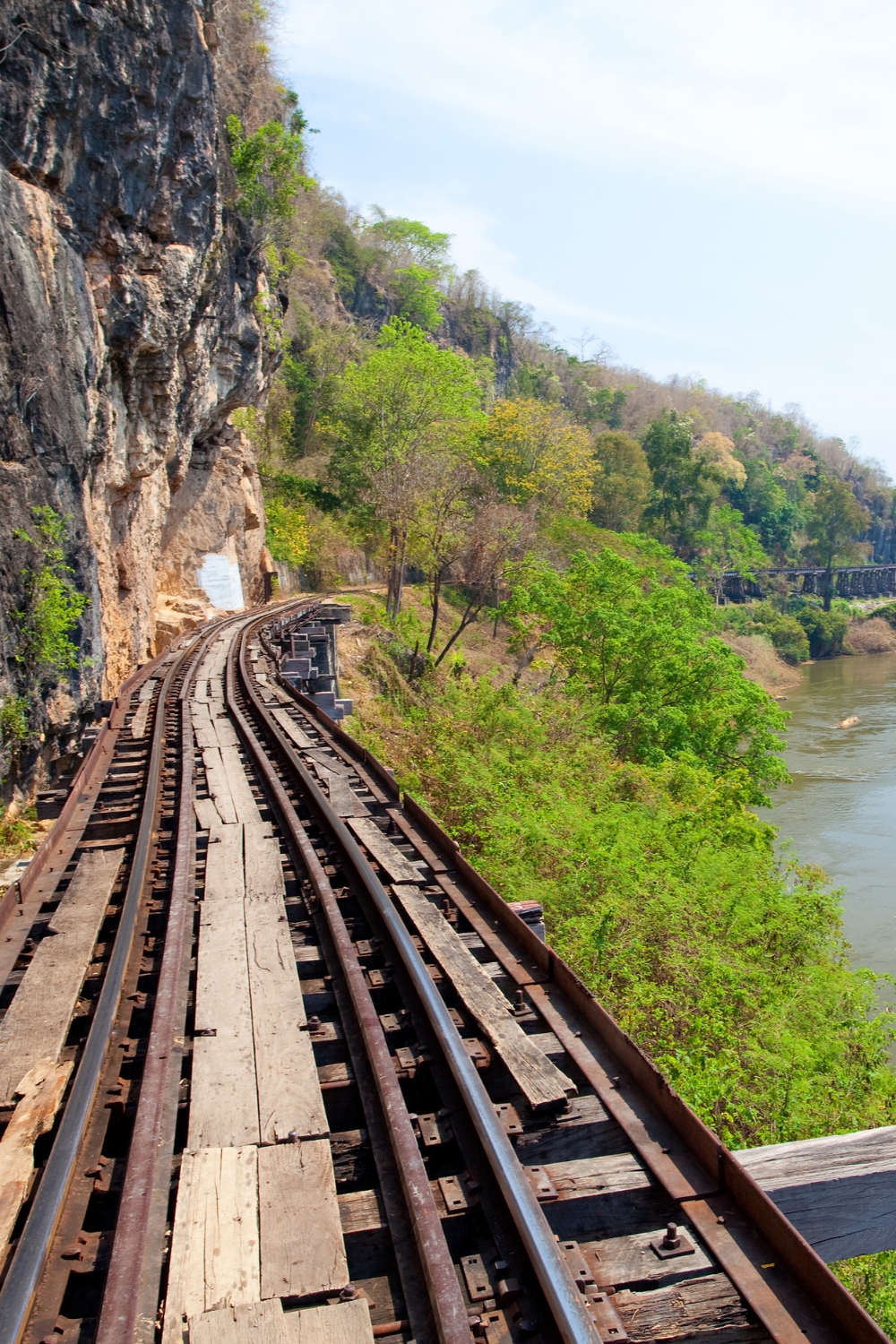
The Thailand-Burma Railway Centre serves as Southeast Asia’s most comprehensive museum dedicated to the Death Railway’s history. This world-class facility provides detailed accounts of the railway’s construction and honors those who perished during its building.
Interactive Exhibits and Historical Documentation
The museum features extensive displays of photographs, artifacts, documents, and personal accounts from survivors. Interactive exhibits help visitors understand the railway’s strategic importance and the horrific conditions faced by prisoners of war and civilian laborers.
A detailed scale model shows the entire 415-kilometer railway route through dense jungle and mountainous terrain. Personal stories from British, Australian, Dutch, and American prisoners provide powerful testimony to human endurance and suffering.
The research center maintains extensive archives and continues investigating the railway’s history. Visitors can access databases containing information about individual prisoners and workers, making it an important resource for families researching relatives’ wartime experiences.
Operating hours: 9:00 AM – 5:00 PM daily Audio guides: Available in multiple languages Research services: Genealogy assistance for families of railway workers
3. Hellfire Pass Memorial Museum – Moving War Memorial
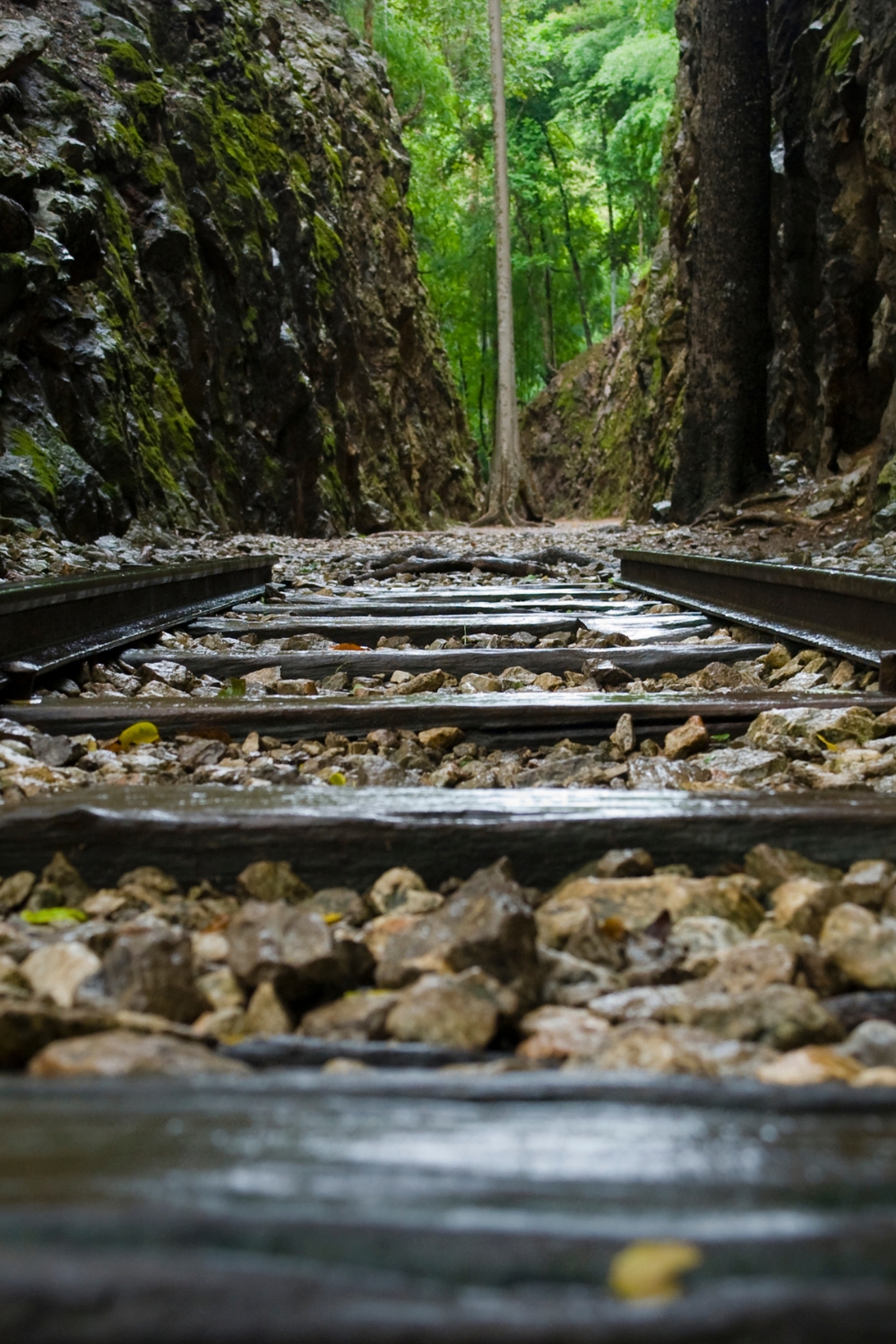
Hellfire Pass represents the most challenging section of the Death Railway, where prisoners carved a 75-meter cutting through solid rock using only hand tools. This memorial site preserves the most brutal construction location and honors those who died building it.
Preserved Railway Cutting and Walking Trail
The museum, built and maintained by the Australian government, tells the story of the 13,000 Australian prisoners who worked on the railway. Personal accounts, photographs, and artifacts create a deeply moving experience that brings history to life.
A 4-kilometer walking trail follows the original railway route through Hellfire Pass. Interpretive signs explain construction methods and share stories of individual prisoners. The walk takes about 2 hours and provides insight into the incredible hardships faced by workers.
The pass earned its name from the hellish conditions created by round-the-clock work shifts. Prisoners worked by torchlight and firelight, creating an eerie glow that resembled scenes from hell. The museum’s audio tour includes survivor testimonies that make the history incredibly personal.
Trail difficulty: Moderate, wear comfortable walking shoes Facilities: Visitor center, rest areas, drinking water Transportation: 18 kilometers from Kanchanaburi town, organized tours available
4. Erawan National Park – Seven-Tier Waterfall Paradise
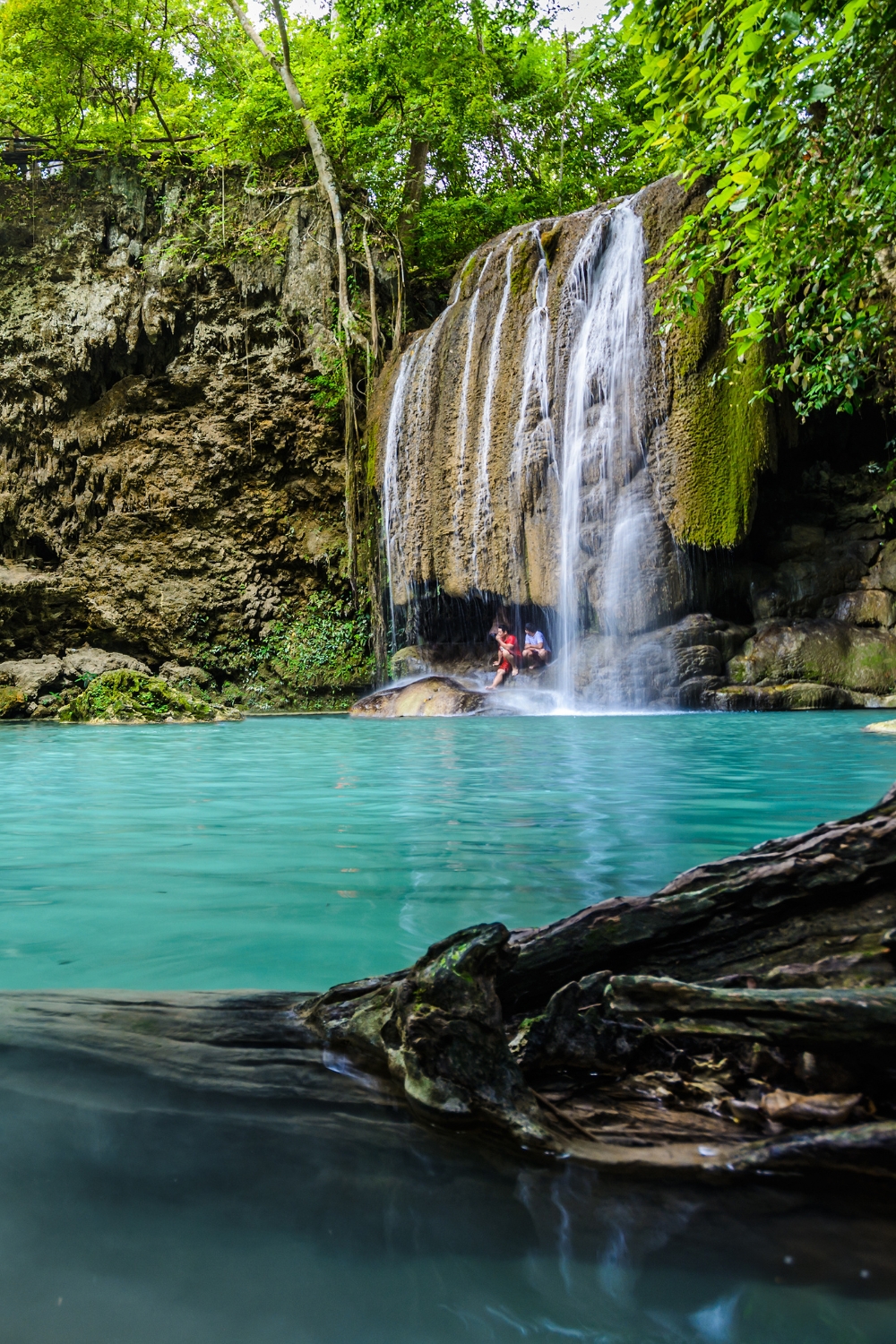
Erawan National Park protects one of Thailand’s most beautiful waterfall systems, featuring seven distinct tiers that cascade down limestone cliffs into turquoise pools. This natural wonder offers swimming, hiking, and wildlife viewing in pristine jungle surroundings.
Multi-Level Waterfall System and Swimming Opportunities
The Erawan Falls climb 2 kilometers up a hillside, with each tier offering unique characteristics and swimming opportunities. The lower levels are easily accessible, while upper tiers require moderate hiking through tropical forest.
Level 1 (Hlai Keun Lung) features wide, shallow pools perfect for families with children. Level 2 (Wung Macha) offers deeper swimming areas surrounded by smooth rocks. Level 3 (Pha Nam Tok) provides the most popular swimming spot with crystal-clear pools.
Higher levels become progressively more challenging to reach but offer greater rewards. Level 7 (Phu Pha Erawan) resembles a three-headed elephant, giving the waterfall its name from Hindu mythology. The hike to the top takes 2-3 hours but rewards visitors with spectacular views.
Best visiting time: November to April during dry season Swimming tips: Bring water shoes for rocky surfaces Wildlife: Monkeys, tropical birds, butterflies, and monitor lizards
5. Sai Yok National Park – River Adventures and Cave Exploration
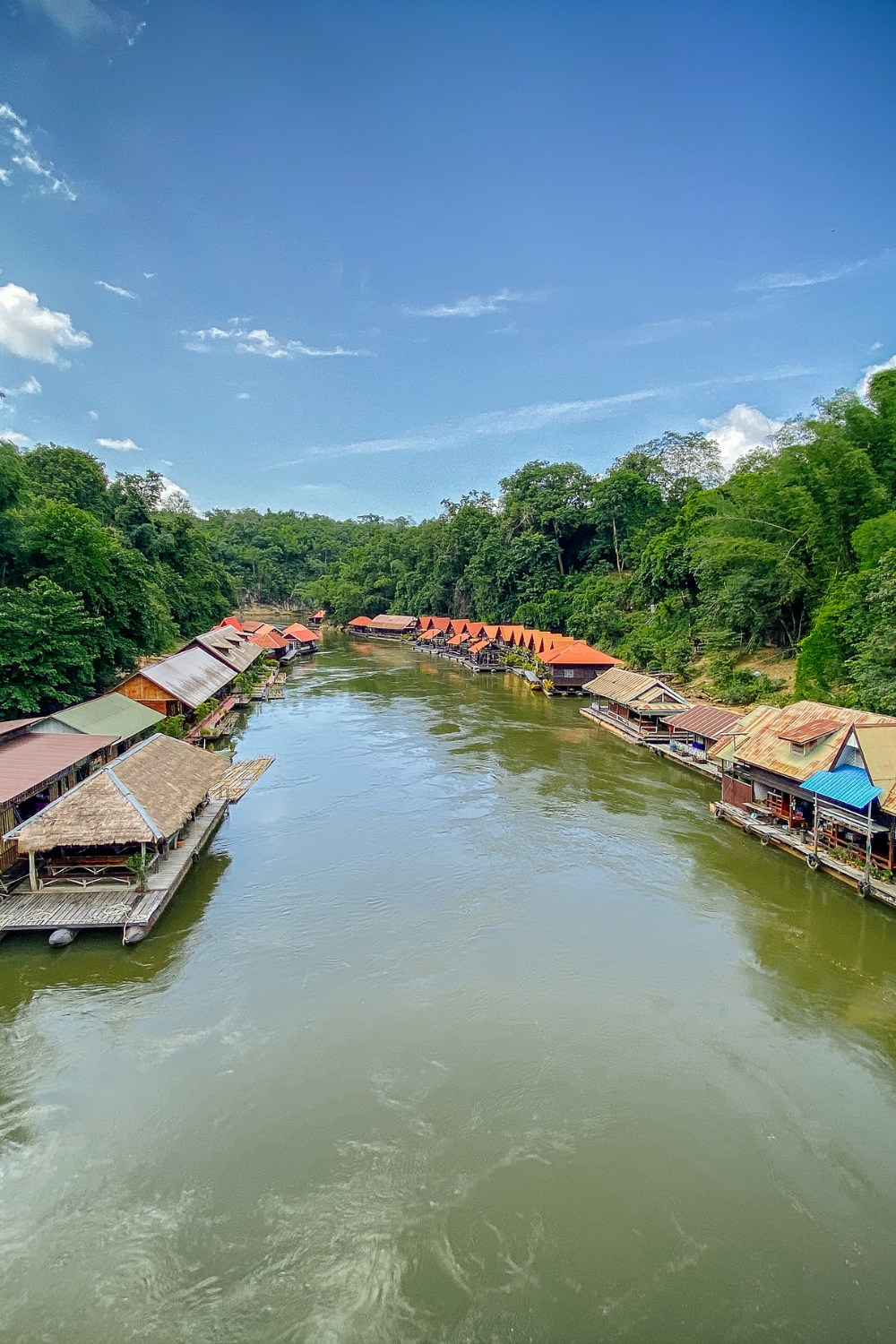
Sai Yok National Park encompasses diverse ecosystems along the Kwai Noi River, featuring limestone caves, smaller waterfalls, and opportunities for river rafting and bamboo floating. This park offers a more adventurous alternative to the popular Erawan Falls.
Sai Yok Waterfall and Lawa Cave System
Sai Yok Waterfall flows directly into the Kwai Noi River, creating a unique swimming experience where visitors can enjoy both river and waterfall waters. The falls are smaller than Erawan but offer a more secluded and peaceful atmosphere.
Lawa Cave extends several kilometers into limestone cliffs and contains impressive stalactite and stalagmite formations. The cave system requires headlamps and can be explored with guided tours. Archaeological evidence suggests human habitation dating back thousands of years.
River activities include bamboo rafting, kayaking, and longtail boat trips through scenic jungle landscapes. Several floating restaurants along the river serve fresh fish and traditional Thai cuisine while providing peaceful dining experiences surrounded by nature.
River activities: Bamboo rafting, kayaking, fishing Accommodation: Floating raft houses, jungle bungalows Cave exploration: Guided tours with proper lighting equipment
6. War Cemeteries – Solemn Places of Remembrance
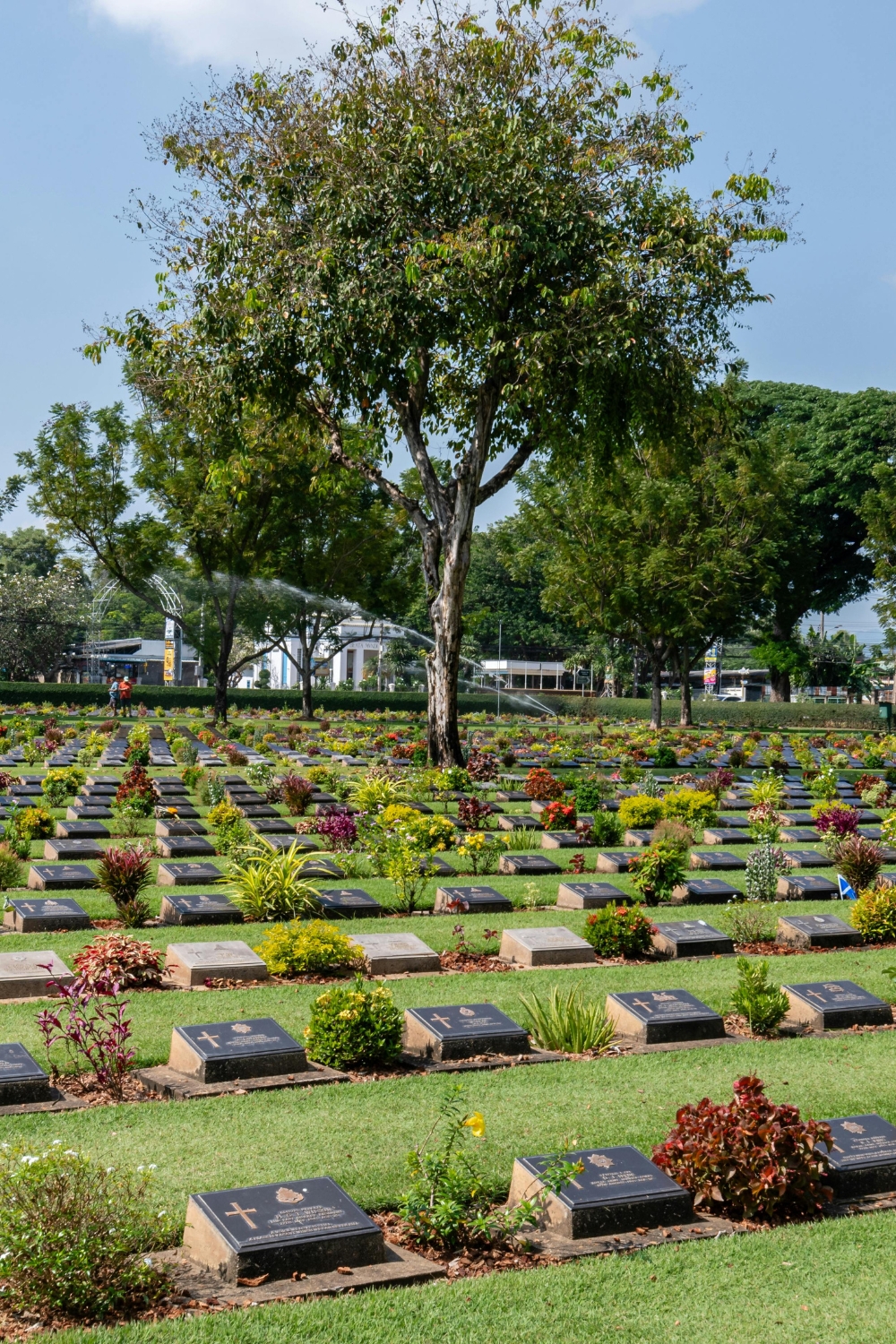
Kanchanaburi contains two beautifully maintained Allied war cemeteries that provide final resting places for prisoners of war who died building the Death Railway. These peaceful memorials offer quiet spaces for reflection and remembrance.
Kanchanaburi War Cemetery and Chong-Kai War Cemetery
Kanchanaburi War Cemetery, also known as Don-Rak War Cemetery, contains 6,982 graves of British, Australian, Dutch, and other Allied prisoners. The Commonwealth War Graves Commission maintains the cemetery with meticulous care, ensuring each grave receives proper honor.
Chong-Kai War Cemetery, located beside the Kwai Noi River, holds 1,750 graves in a more intimate setting. This cemetery was built on the site of a former prisoner of war hospital and contains the graves of many who died from disease and malnutrition.
Both cemeteries feature beautiful gardens, memorial walls, and visitor centers with information about those buried there. The perfectly maintained grounds provide peaceful environments for contemplation and paying respects to those who made the ultimate sacrifice.
Visiting hours: Dawn to dusk daily Visitor facilities: Information centers, parking, restrooms Commemoration services: Annual ANZAC Day ceremonies in April
7. Wat Tham Sua (Tiger Cave Temple) – Spiritual Mountain Climb
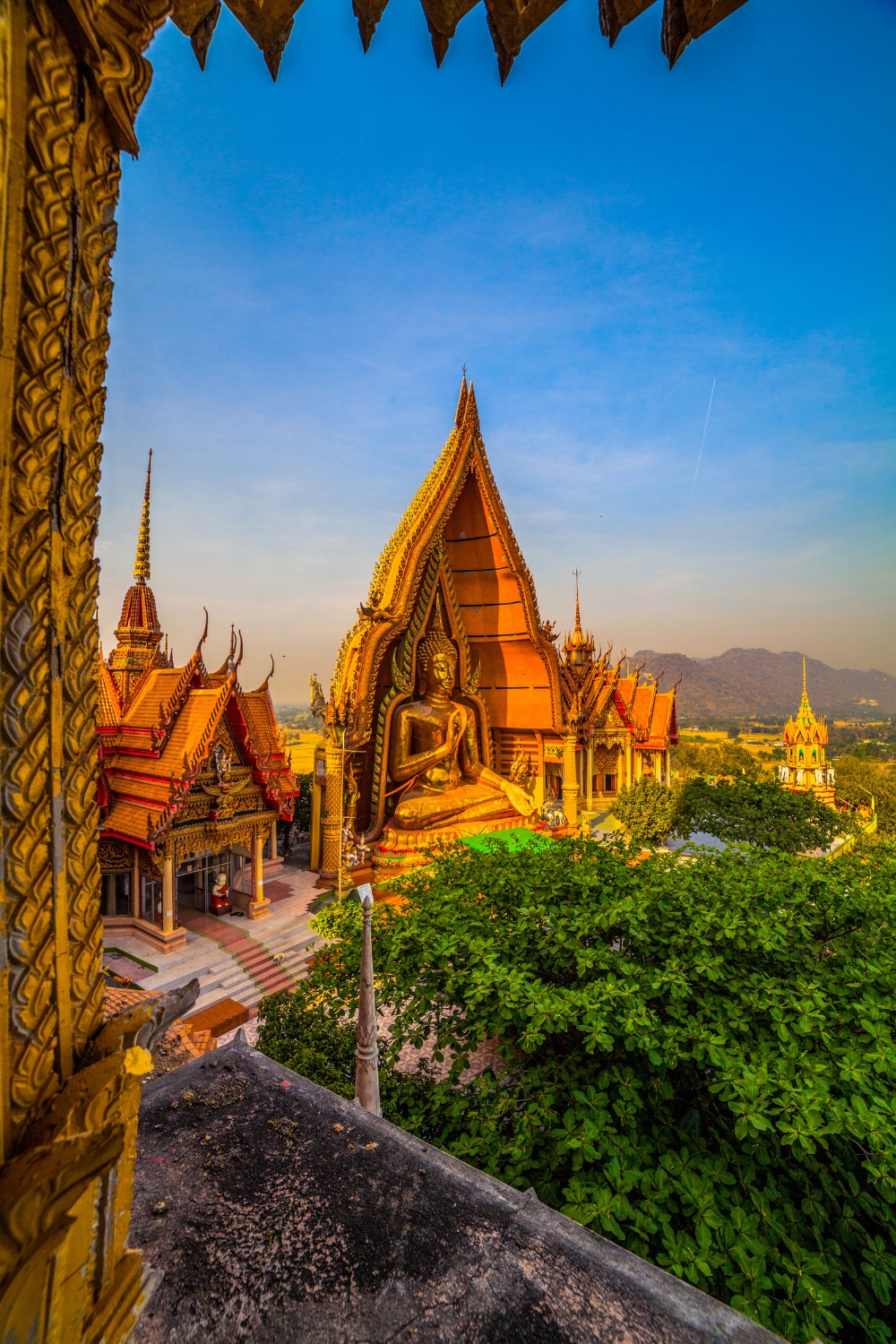
Wat Tham Sua offers one of Kanchanaburi’s most rewarding spiritual and physical challenges, requiring visitors to climb 157 steps up a limestone mountain to reach stunning temple buildings and panoramic valley views.
Mountain Temple Complex and Meditation Caves
The temple’s name comes from tiger paw prints found in limestone caves, though no tigers remain in the area today. The main temple buildings feature beautiful architecture and house revered Buddha images that attract Buddhist pilgrims from across Thailand.
The climb to the summit temple tests physical fitness but rewards visitors with spectacular 360-degree views of Kanchanaburi province. The golden chedi (pagoda) at the peak creates a dramatic silhouette against mountain backdrops.
Several meditation caves within the mountain provide quiet spaces for reflection and spiritual practice. Monks often use these caves for extended meditation retreats, following ancient Buddhist traditions of forest monastery practice.
Climbing difficulty: Moderate to challenging, 157 steep steps Best time: Early morning or late afternoon to avoid heat Dress code: Cover shoulders and knees, remove shoes in temple buildings
8. Kanchanaburi Town and Floating Restaurants – Cultural Center
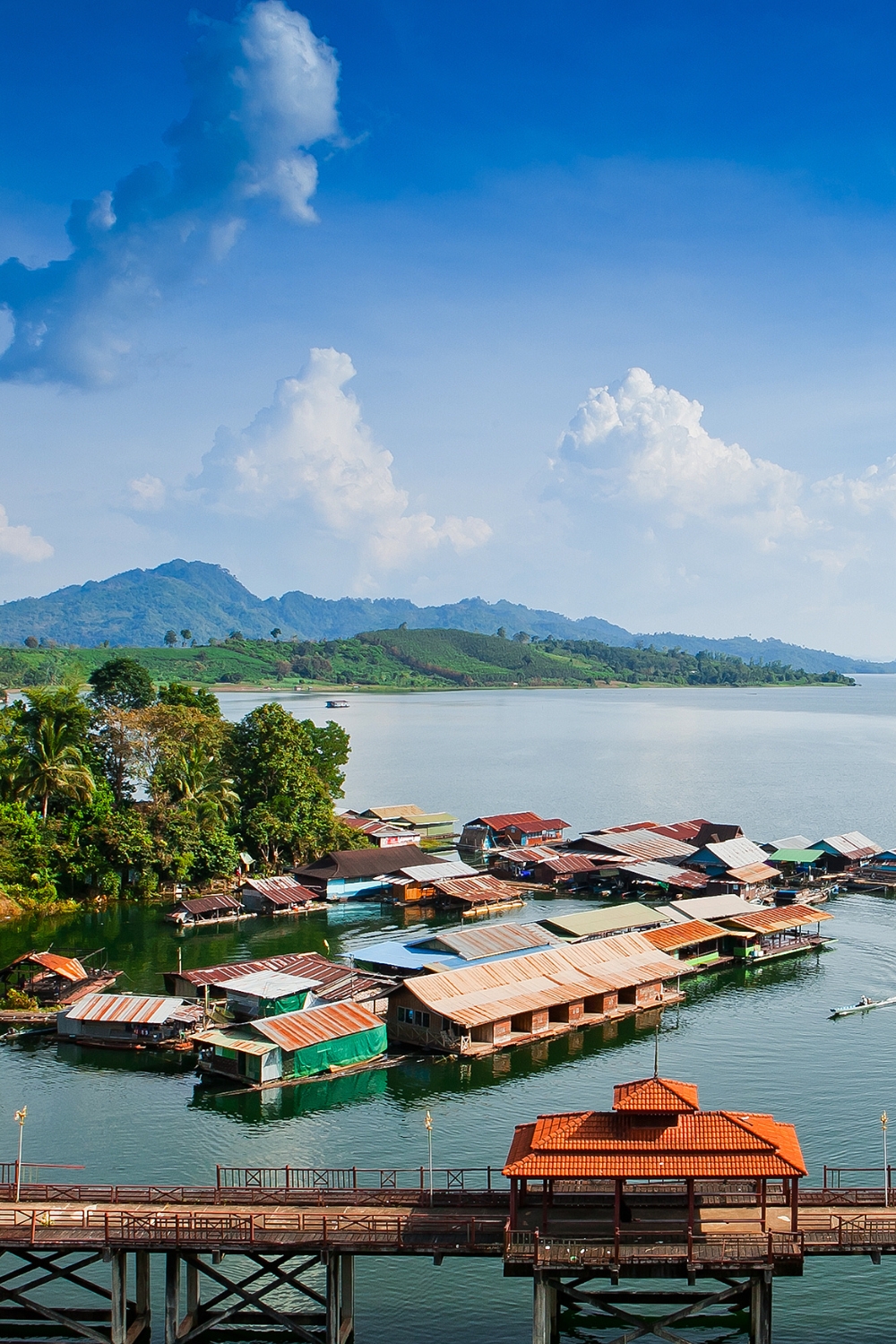
Kanchanaburi town serves as the province’s cultural and commercial center, offering night markets, riverside restaurants, and authentic local experiences. The town provides excellent bases for exploring surrounding attractions while experiencing genuine Thai provincial life.
Riverside Dining and Night Market Culture
Floating restaurants along the Mae Klong and Kwai Rivers offer unique dining experiences where tables are built on platforms over the water. These restaurants specialize in fresh river fish, traditional Thai curries, and local specialties while providing peaceful evening ambiance.
The town’s night market comes alive after 6:00 PM with food stalls, handicraft vendors, and local products. Visitors can sample regional specialties like som tam (papaya salad), grilled fish, and sticky rice while experiencing authentic Thai market culture.
Several temples within town offer opportunities for cultural learning and spiritual experiences. Local festivals throughout the year showcase traditional music, dance, and religious ceremonies that provide insight into rural Thai culture.
Night market hours: 6:00 PM – 11:00 PM daily Floating restaurant specialties: Fresh river fish, tom yum soup, Thai curries Cultural activities: Temple visits, traditional massage, local festivals
9. Prasat Muang Singh Historical Park – Ancient Khmer Ruins
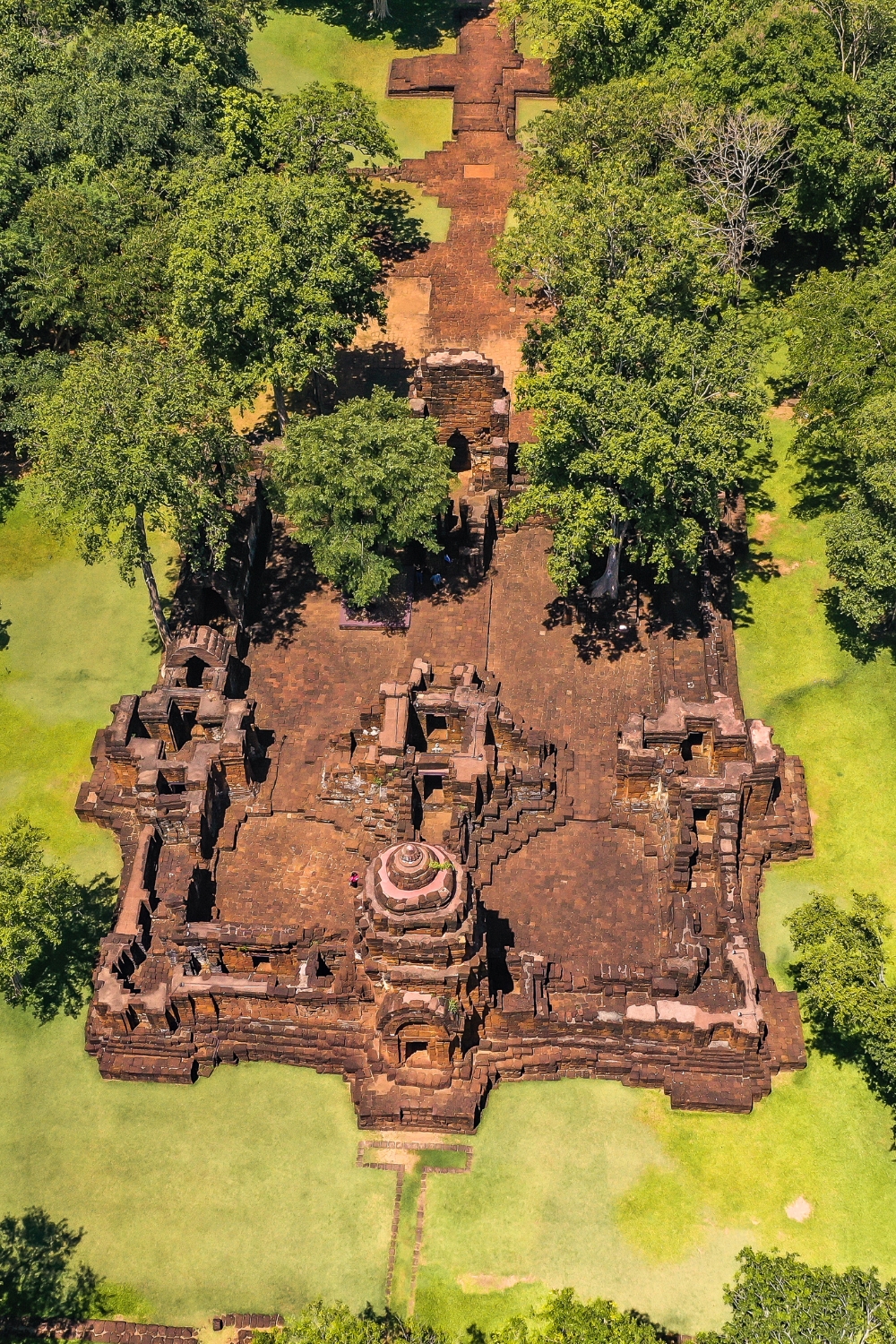
Prasat Muang Singh preserves the westernmost Khmer temple complex in Thailand, dating from the 13th century when the Khmer Empire extended its influence throughout Southeast Asia. These ancient ruins provide insight into pre-Thai civilizations.
Khmer Architecture and Archaeological Discoveries
The main temple structure displays classic Khmer architectural features including laterite construction, intricate stone carvings, and Hindu-Buddhist religious symbolism. The temple was dedicated to Hindu deities but shows Buddhist influences from later periods.
Archaeological excavations have uncovered artifacts including pottery, tools, and religious objects that provide evidence of ancient trade routes and cultural exchange. The site museum displays these discoveries alongside information about Khmer civilization.
The park’s peaceful setting beside the Kwai Noi River creates an atmospheric location for exploring ancient history. Walking paths connect different temple structures while interpretive signs explain architectural features and historical significance.
Historical period: 13th century Khmer Empire Architectural style: Bayon period Khmer temple design Museum exhibits: Archaeological artifacts, historical timeline, cultural displays
10. Srinakarin Dam and Huai Mae Khamin Waterfall – Natural Recreation Area
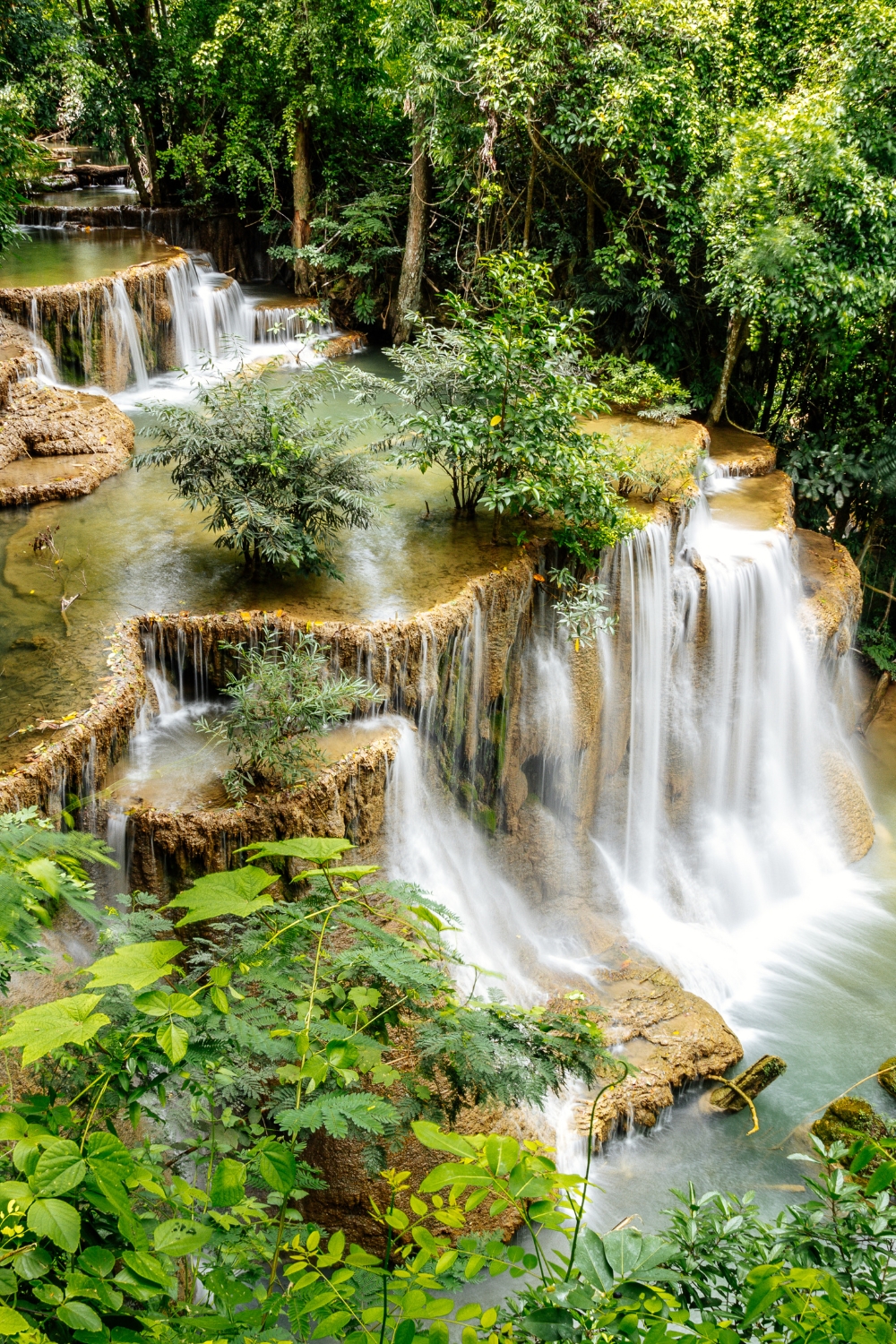
Srinakarin Dam creates a large reservoir surrounded by forested mountains, while nearby Huai Mae Khamin Waterfall offers another spectacular multi-tier cascade system. This area provides water sports, hiking, and pristine natural beauty.
Lake Activities and Seven-Tier Waterfall System
The reservoir offers opportunities for boating, fishing, water skiing, and swimming in clean mountain water. Several resorts around the lake provide accommodation and equipment rental for water sports enthusiasts.
Huai Mae Khamin Waterfall features seven distinct levels, each with unique characteristics and swimming opportunities. The waterfall system is less crowded than Erawan Falls but equally beautiful, with limestone pools and tropical forest surroundings.
The area supports diverse wildlife including elephants, deer, wild boar, and numerous bird species. Early morning and evening visits offer the best chances for wildlife viewing along forest trails and lake shores.
Water activities: Boating, fishing, swimming, water skiing Waterfall access: 6-kilometer drive from main road, then 20-minute walk Wildlife viewing: Best during early morning and late afternoon
Planning Your Kanchanaburi Adventure
Getting to Kanchanaburi
Kanchanaburi is easily accessible from Bangkok by train, bus, or private vehicle. The most scenic option is taking the train from Bangkok’s Thonburi Station, which crosses the famous bridge and takes about 3 hours. Buses depart regularly from Bangkok’s Southern Bus Terminal and take approximately 2.5 hours.
Best Time to Visit
The ideal time to visit Kanchanaburi is during the cool dry season from November to February, when temperatures are comfortable and rainfall is minimal. March to May can be very hot, while June to October brings heavy rains that may affect outdoor activities.
Accommodation Options
Kanchanaburi offers accommodation ranging from budget guesthouses to luxury resorts. Floating raft houses on the river provide unique experiences, while jungle lodges near national parks offer immersive nature experiences.
Transportation Within the Province
Renting a motorbike or car provides the most flexibility for exploring multiple attractions. Organized tours are available for those preferring guided experiences. Local songthaews (shared taxis) connect major attractions, though schedules can be irregular.
Essential Travel Tips
Respectful Tourism
When visiting war memorials and cemeteries, maintain respectful behavior and dress appropriately. These sites commemorate real human tragedy and deserve solemn respect from all visitors.
Natural Area Guidelines
National parks require entrance fees and have specific regulations about wildlife interaction and environmental protection. Stay on designated trails, don’t feed animals, and carry out all trash.
Cultural Sensitivity
Dress modestly when visiting temples, covering shoulders and knees. Remove shoes before entering temple buildings and maintain quiet, respectful behavior during religious ceremonies.
Safety Considerations
Swimming in waterfalls and rivers requires caution as currents can be strong and rocks slippery. Use proper safety equipment for adventure activities and inform others of your plans when hiking alone.
Conclusion
Kanchanaburi offers a profound travel experience that combines historical education with natural beauty and cultural immersion. From the sobering lessons of the Death Railway to the refreshing cascades of Erawan Falls, this province provides memories that last a lifetime.
The region’s tragic wartime history serves as a powerful reminder of human resilience and the importance of peace, while its stunning natural attractions showcase Thailand’s incredible biodiversity and scenic beauty. Local communities maintain their traditional ways of life while welcoming visitors with genuine Thai hospitality.
Whether you’re seeking historical understanding, natural adventures, or spiritual experiences, Kanchanaburi delivers on all fronts. The province’s proximity to Bangkok makes it an perfect destination for day trips or extended stays, while its diverse attractions ensure multiple visits reveal new discoveries.
Plan your Kanchanaburi journey with respect for its history, appreciation for its natural beauty, and openness to cultural learning. This remarkable province will provide insights into Thailand’s complex past while creating unforgettable memories of its present beauty.
